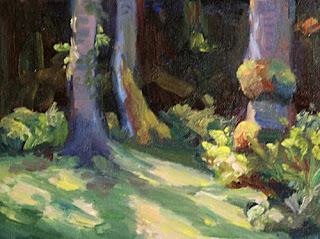
BOOK REVIEW: Bold Strokes: Dynamic Brushwork for Oils and Acrylics, by Mark Christopher Weber. North Light Books, 2009.
This new book by Mark Christopher Weber takes the highlights of BRUSHWORK ESSENTIALS, his previous publication, and goes one step further, with step-by-step painting exercises to teach you expressive brushwork. He begins with the basics: how to get paint on your brush. Then, with three main ways of loading the brush, he demonstrates the variety of strokes you can make. Once you have the basics down, you’re ready to tackle the paintings.
Weber takes a subject and walks you step by step through initial washes and expressive strokes laid on top. By going through these exercises, you can begin to get the feel of how to choose where to put your paint to make the most impact. You can learn how to vary the width of your stroke with pressure and with twisting the brush. You can practice the essential color notes and highlights to simply capture a subject. The illustrations make it very clear where to put the paint in the exercise paintings, but not as clear how to get it exactly there.
The painting demonstrations are in both acrylic and water-miscible oil, a nice bonus if you are having trouble finding books in this relatively new medium. Personally, I’d prefer some demos in traditional oils. If I could wish for anything, it would be that he’d spend more time demonstrating how to lay paint on top of wet paint, how to create gradations, and how to add color into already painted areas.
If you’re looking for a spur or need some guidance in creating your own signature brushwork, this book is worth playing with.







